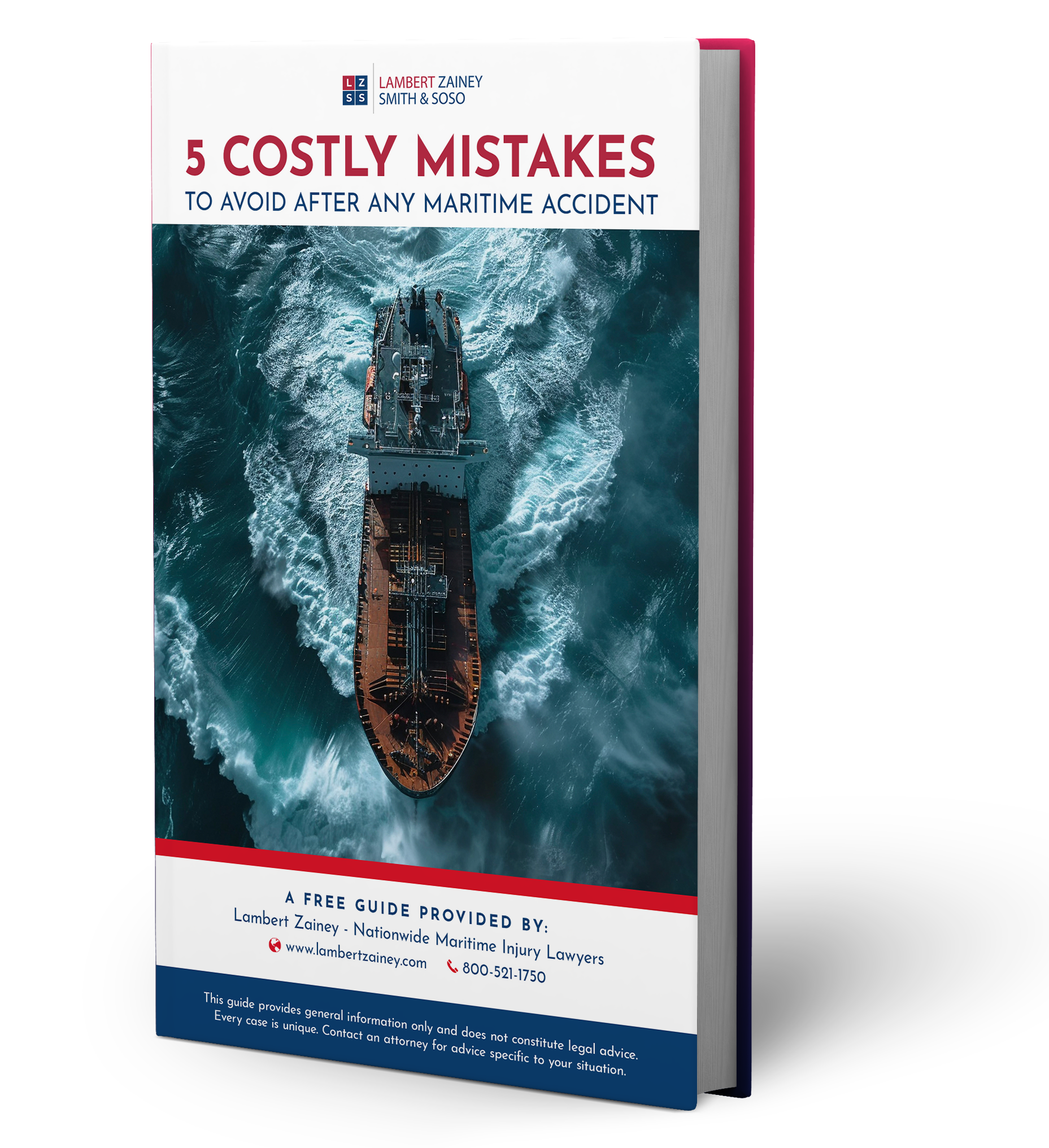Does a bankruptcy court have the authority to dispose of a maritime lien through application of bankruptcy law? That was one of the questions put before the United States Court of Appeals for the Ninth District in a case concerning the maritime lien of a seaman and his right to maintenance and cure under admiralty law.

Barnes v Hawaii Rafting, LLC. 16-15023
In July 2012, Charles Barnes was the captain of the sightseeing/snorkeling vessel M/V Tehani when a faulty fuel tank exploded. Barnes suffered serious injuries as a result of the explosion. He sued his employers, Sea Hawaii Rafting, LLC, and the company’s owner Kris Henry, seeking compensation for maintenance and cure, damages, and attorney’s fees resulting from the explosion. He sued the vessel, the Tehani, in rem, and SHR, LLC and Henry in personam to enforce his seaman’s maritime lien against the vessel.
In admiralty law, a maritime lien is a non-possessory property right in a vessel. It is placed upon a vessel to ensure payment for “necessary” services. There are a number of claims in which a maritime lien may be placed against a vessel, including, as in the Barnes case, a personal injury claims resulting from a defect in a ship. It is an action in rem (property), meaning that is an action against the maritime property — in this case, the Tehani, not the owner.
A Matter for Admiralty Courts?
Normally, Admiralty courts handle such claims, but this did not happen in Barnes’ case for two reasons. First, the district court rejected Barnes’s pretrial requests to enforce SHR’s obligation to pay maintenance and cure, despite the fact that they concluded he was entitled to these benefits. Second, after SHR, LLC declared bankruptcy, the bankruptcy court concluded that the Tehani was an asset of the debtor’s estate and that the automatic bankruptcy stay barred proceedings to enforce Barnes’s maritime lien against the vessel.
The court dismissed Barnes’ claims against the Tehani, reasoning that it lacked in rem jurisdiction to enforce his claim of a maritime lien on the Tehani. Then, while Barnes’ appeal was pending, the Tehani was sold — with the court’s approval — free and clear of Barnes’ maritime lien. The bankruptcy trustee subsequently moved to dismiss Barnes’ appeal as moot.
The U.S. Appeals Court Came to a Different Conclusion
The appeals court disagreed, reversing and remanding the earlier decision. They concluded that:
The court also denied the bankruptcy trustee’s motion to have the appeal dismissed as moot.
Get Our FREE Guide to Protect Your Claim
What you do after an accident is critical. Insurance companies will try to get you to make mistakes that can hurt your claim. Our free guide can help you avoid these traps.
Download our complimentary guide: “5 Costly Mistakes to Avoid After Any Maritime Accident” to arm yourself with the knowledge you need to protect your rights.
Bankruptcy Law versus Admiralty Law
The decision in Barnes v Sea Hawaii Rafting, LLC demonstrates the importance of complying with admiralty laws during the divestment of maritime assets in bankruptcy court.
If you are a maritime worker who has been injured while serving aboard a vessel, you have a right to claim maintenance and cure benefits for your injuries. Even if the vessel’s owners declare bankruptcy, you still have a maritime lien against the vessel, entitling you to collect damages in case of injuries.
This case demonstrates the complicated nature of many maritime injury claims and why it is so important to be represented by an attorney with extensive experience in maritime law.
The New Orleans maritime attorneys of Lambert Zainey have been helping injured seamen and other maritime workers navigate the difficult straits of maritime law for over 40 years. If you were injured in a maritime accident, contact Lambert Zainey to schedule a free consultation and discuss your case.
Does a bankruptcy court have the authority to dispose of a maritime lien through application of bankruptcy law? That was one of the questions put before the United States Court of Appeals for the Ninth District in a case concerning the maritime lien of a seaman and his right to maintenance and cure under admiralty law.

Barnes v Hawaii Rafting, LLC. 16-15023
In July 2012, Charles Barnes was the captain of the sightseeing/snorkeling vessel M/V Tehani when a faulty fuel tank exploded. Barnes suffered serious injuries as a result of the explosion. He sued his employers, Sea Hawaii Rafting, LLC, and the company’s owner Kris Henry, seeking compensation for maintenance and cure, damages, and attorney’s fees resulting from the explosion. He sued the vessel, the Tehani, in rem, and SHR, LLC and Henry in personam to enforce his seaman’s maritime lien against the vessel.
In admiralty law, a maritime lien is a non-possessory property right in a vessel. It is placed upon a vessel to ensure payment for “necessary” services. There are a number of claims in which a maritime lien may be placed against a vessel, including, as in the Barnes case, a personal injury claims resulting from a defect in a ship. It is an action in rem (property), meaning that is an action against the maritime property — in this case, the Tehani, not the owner.
A Matter for Admiralty Courts?
Normally, Admiralty courts handle such claims, but this did not happen in Barnes’ case for two reasons. First, the district court rejected Barnes’s pretrial requests to enforce SHR’s obligation to pay maintenance and cure, despite the fact that they concluded he was entitled to these benefits. Second, after SHR, LLC declared bankruptcy, the bankruptcy court concluded that the Tehani was an asset of the debtor’s estate and that the automatic bankruptcy stay barred proceedings to enforce Barnes’s maritime lien against the vessel.
The court dismissed Barnes’ claims against the Tehani, reasoning that it lacked in rem jurisdiction to enforce his claim of a maritime lien on the Tehani. Then, while Barnes’ appeal was pending, the Tehani was sold — with the court’s approval — free and clear of Barnes’ maritime lien. The bankruptcy trustee subsequently moved to dismiss Barnes’ appeal as moot.
The U.S. Appeals Court Came to a Different Conclusion
The appeals court disagreed, reversing and remanding the earlier decision. They concluded that:
The court also denied the bankruptcy trustee’s motion to have the appeal dismissed as moot.
Get Our FREE Guide to Protect Your Claim
What you do after an accident is critical. Insurance companies will try to get you to make mistakes that can hurt your claim. Our free guide can help you avoid these traps.
Download our complimentary guide: “5 Costly Mistakes to Avoid After Any Maritime Accident” to arm yourself with the knowledge you need to protect your rights.
Bankruptcy Law versus Admiralty Law
The decision in Barnes v Sea Hawaii Rafting, LLC demonstrates the importance of complying with admiralty laws during the divestment of maritime assets in bankruptcy court.
If you are a maritime worker who has been injured while serving aboard a vessel, you have a right to claim maintenance and cure benefits for your injuries. Even if the vessel’s owners declare bankruptcy, you still have a maritime lien against the vessel, entitling you to collect damages in case of injuries.
This case demonstrates the complicated nature of many maritime injury claims and why it is so important to be represented by an attorney with extensive experience in maritime law.
The New Orleans maritime attorneys of Lambert Zainey have been helping injured seamen and other maritime workers navigate the difficult straits of maritime law for over 40 years. If you were injured in a maritime accident, contact Lambert Zainey to schedule a free consultation and discuss your case.








